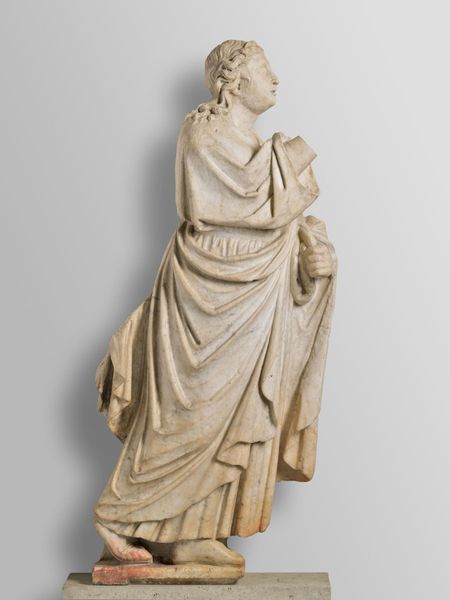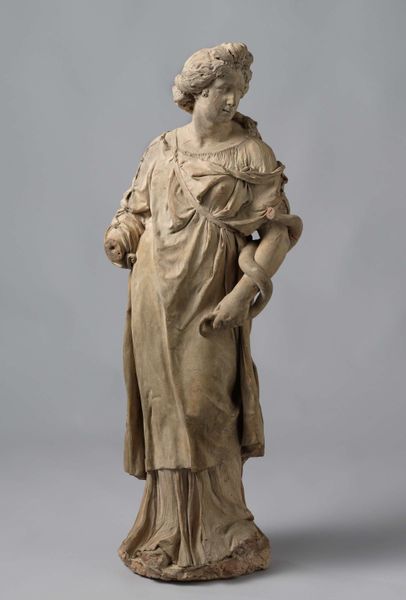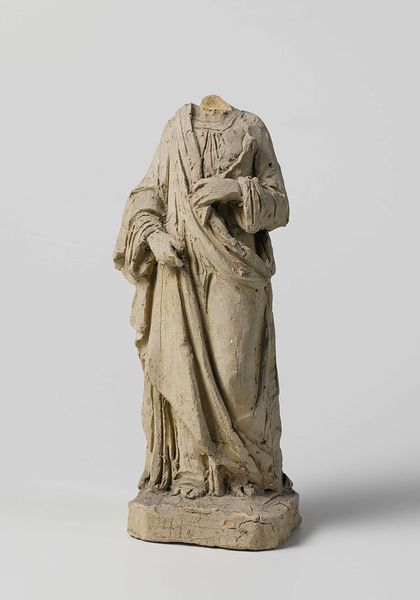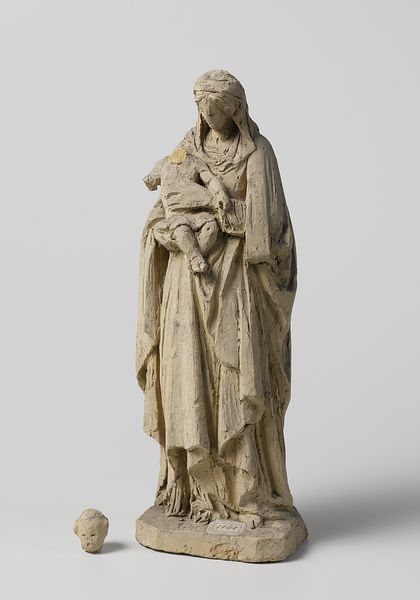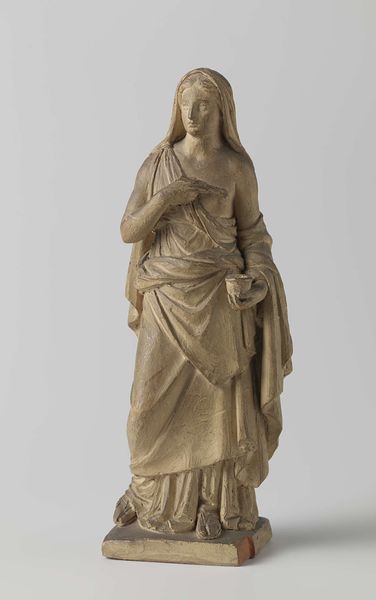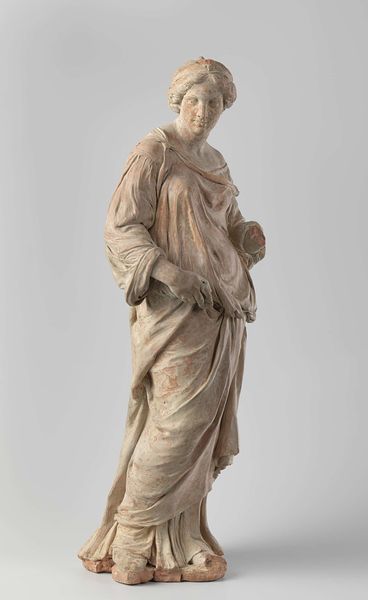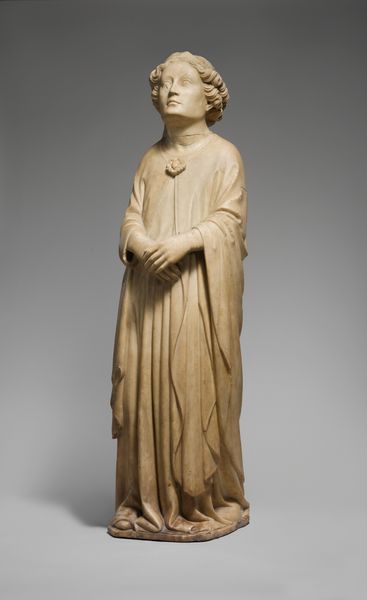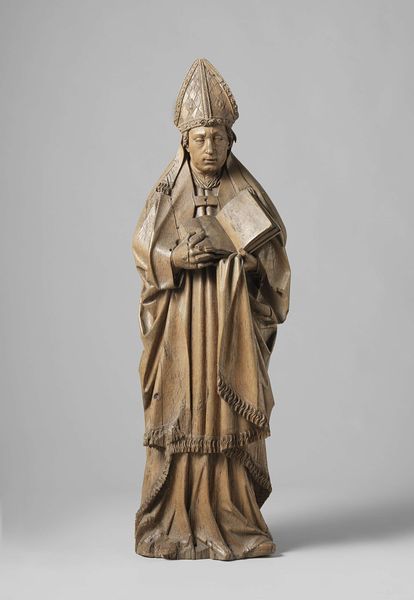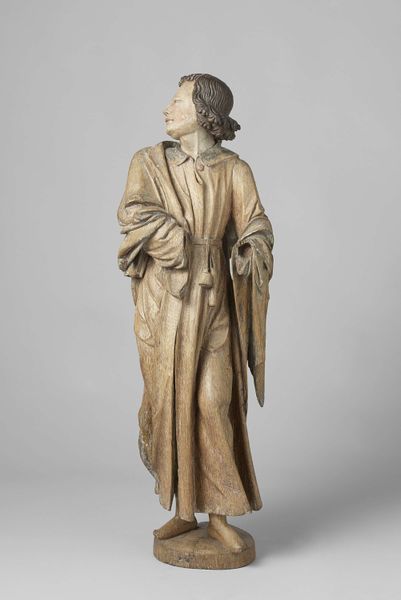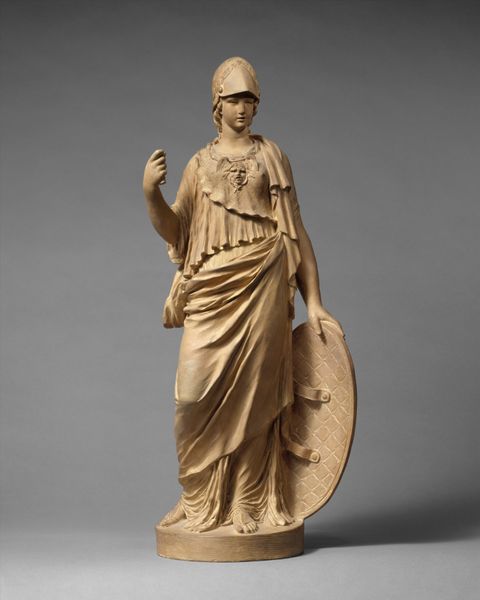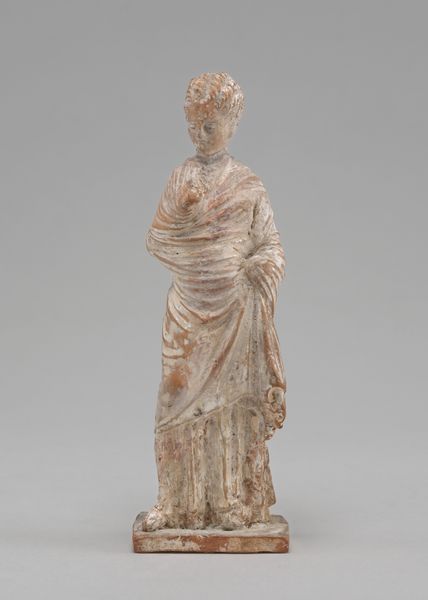
sculpture, marble
#
portrait
#
neoclacissism
#
classical-realism
#
figuration
#
form
#
sculpture
#
history-painting
#
academic-art
#
marble
#
statue
Dimensions: height 30.5 cm, width 11.5 cm, depth 8.5 cm
Copyright: Rijks Museum: Open Domain
Louis Royer made this plaster sculpture of a symbolic female figure in the Netherlands, during the first half of the 19th century. The work embodies the ideal of Neoclassicism which was very influential in European art at the time. Inspired by the art of ancient Greece and Rome, Neoclassicism sought to revive classical ideals of beauty, order, and rationality, often carrying over philosophical ideas about the role of art in civic life. This is why Royer’s figure is clad in classical robes. But there are also social and political dimensions to this choice. After the upheavals of the French Revolution, and the Napoleonic wars, Neoclassicism was seen as embodying a return to stability and order. In many European cities, old monarchies and elites looked to the visual culture of ancient empires to legitimize their power. To understand this piece better, we can study the history of art academies in the Netherlands. By exploring these sources, the figure comes into focus as part of the culture of its time.
Comments
No comments
Be the first to comment and join the conversation on the ultimate creative platform.

